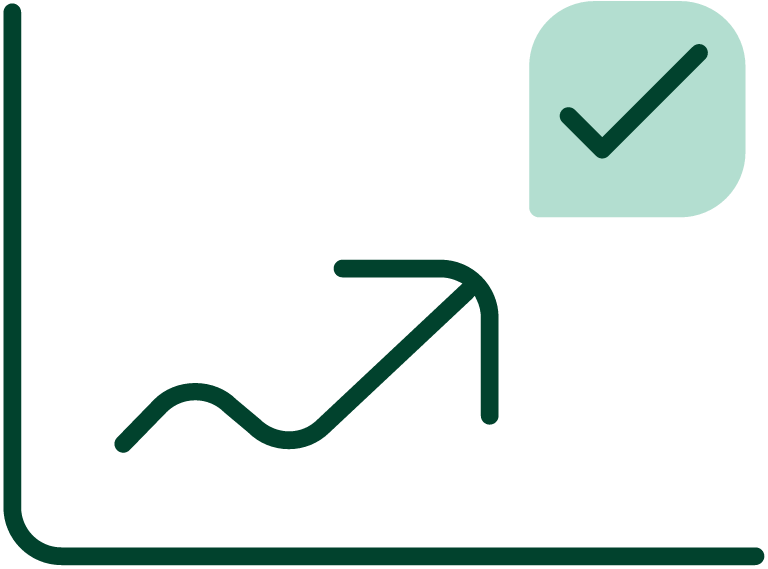You can learn a lot from your Days Sales Outstanding (DSO) metric.
It’s an important metric in your cash conversion cycle with big implications for long-term financial viability. Let’s review a few of the most important things to know about calculating DSO and how it affects your functioning – both as a business entity and as a collections team.
DSO: A Measure of Accounts Receivable Health
DSO is one of the most crucial metrics for gauging the health of your accounts receivable (A/R) processes. Your A/R measures the balance of money due to your firm for goods and services delivered to, but not yet paid for, by customers. In essence, A/R is a balance of any amount of money owed by customers. So, how does DSO come into play?
DSO is a measure of the average number of days it takes your company to collect payments after making sales. Most companies measure this metric on a monthly, quarterly, or annual basis because it provides an important benchmark for how able your company is to collect on its debts and maintain its cash flow.
The Days Sales Outstanding Formula
When you need to calculate days sales outstanding, simply divide the amount of accounts receivable in your chosen time period by the total value of credit sales during that same period. Then, multiply the result by the number of days in the period measured. This is the basic DSO formula:
(Accounts Receivable/Total Sales) x Number of Days = DSO
For example, if you wanted to calculate the annual DSO for your company with $22.5M in its A/R balance sheet and $150M in total sales, your formula would look like this:
($22,500,000 / $150,000,000) x 365 = 54.75 days
With this simple formula for DSO, you can see that it takes customers on average 54-55 days to pay their outstanding invoices.
Knowing how to calculate DSO is only part of the puzzle. Aside from your average days to receive payment, what can you learn from your DSO metric?
What DSO Tells You About Your Company
The primary benefit of DSO measurement is gaining insight into collections performance. As you monitor DSO over time, you’ll learn about your company’s financial health, cash intake predictability, and your vendors’ payment practices:
Want to improve your DSO?
Download this eBook to understand how to enhance your collections process with automation
Download NowHigh DSO
Your company may have liberal collections policies that take a long time to collect. Alternatively, your A/R collections team may be backlogged with the number of invoices they process.
A high DSO could also mean your A/R collections process is inefficient. Your team could be overwhelmed or your emails could be phrased wrong. You could be maneuvering the process in an ineffective way. There are many issues your collections methods could be suffering from.
Whatever the cause, your company likely struggles with low cash on hand and too many transactions floating on credit. This in turn may cause you to miss out on investment opportunities.
Low DSO
Companies should be wary of creating collections policies that are too strict. When DSO is too low, it means you’re pressing customers to make payments at speed, which can be frustrating for them. After all, there’s a reason they paid on credit rather than cash and removing payment flexibility could deter repeat business over time.
Limitations of DSO Calculations
DSO ratios vary across industries and business types; it’s hard to create a global benchmark for what’s considered a “good” or “bad” DSO. A DSO of 45 days or fewer is an oft-cited benchmark, but companies with higher ratios of cash transactions will have much different DSO ratios than those relying on credit.
This means DSO can’t really be used as a competitive measure. If you try to compare your DSO to another company’s, you’ll need to ensure they have a very similar business model and revenue numbers.
Instead of using it as a comparative tool, it’s better to use it as an internal control that gets regularly tracked over time. If your DSO trends upward or downward over the months/years, it can indicate issues that may need to be addressed. Whichever way your DSO shakes out, it pays to be consistent in tracking it.
Automation Streamlines DSO Management
This is why automation is such a powerful tool for improving your collections process. With automated platforms, you can run DSO reports as often as needed without worrying about labor costs. This makes it easier to run reports regularly, identify trends, and determine how those trends should be addressed.
Keeping your DSO at an ideal number is a tightrope walk between getting paid quickly and maintaining healthy customer relationships. It’s also an important metric for deeper A/R calculations, such as the relationship between accounts receivable turnover vs. days sales outstanding.
Whether you need to reduce days sales outstanding or increase it to give customers some leeway, automation makes things easy. With these solutions, you’ll have all the data you need to streamline your A/R collections efforts and take away valuable insights from the process.
If you’re interested in learning how to apply an automated A/R collections solution for your company, contact Gaviti and we’ll walk you through the details.






















